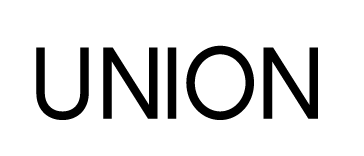We Need an Advocate
Parashat Tetzaveh, Exodus 27:20–30:10
By Rabbi Paul L. Saal, Congregation Shuvah Yisrael, West Hartford, CT
Early in this week’s parasha we are introduced to the new and exotic station given to Aaron and his sons—the role and office of the Kohanim (priests). They would become the highest religious authorities in the Torah, providing a stable presence as officiants, healers, and intercessors. Through the elaborate practices of sacrifice, offerings, and ritual purity, the Kohen Gadol (the High Priest) and his associates would provide Israel with the comfort of Hashem’s renewed love as well as a reminder of his awesome presence. On a daily basis they would help to exemplify the dynamic tension between Ahavat Hashem (the love of God) and Yirat Hashem (the appropriate fear of God). They would call B’nei Yisrael back to a renewed commitment to Torah.
This week’s parasha elaborates on the dazzling apparel of the Kohanim and especially Aaron the Kohen Gadol. The Torah speaks of his tunic, ephod, precious stones, crown, and choshen (breastplate). The choshen was adorned with three rows of four stones each. On each stone was inscribed the name of one of Israel’s twelve tribes. According to the Midrash (Shemot Rabbah 38), the Kohen Gadol would wear the stones so that when he entered the Holy of Holies Hashem would be mindful of the merits of the tribes of Israel.
So not only were the Kohanim to remind the people of Israel of Hashem, but part of their function was to remind Hashem of the people as well. They stood as symbolic exemplars of the Jewish people’s striving for holiness and justice through a life and regimen of sacred deeds. Through the ritual of sacrifice, they would plead on the people’s behalf, acting as their advocate so that Hashem might not remove his Holy Presence.
Why then, in response to Messianic claims about the mediating role of the Messiah, does one often hear some Jewish people remark, “We Jews believe that we can come directly to God, we have no need for an advocate”? This sort of statement portrays the difference between the two belief systems of Messianic and mainstream Judaism as a controversy over the possibility of obtaining unmediated access to God. Is this an accurate representation? Historically it is, in part, but only if we ignore the greater weight of Torah and accept but one particular view of Judaism.
After the destruction of the Temple in the year 70 the priestly system of mediation ceased. Judaism at that time was a broad landscape that included the Pharisees, the Sadducees, the Essences, the Qumran community, and among others the followers of Yeshua. Each of these groups had to ask themselves how the Jewish people were to survive without the priestly system that was essential to Judaism and prominent through most of the Torah. The early Messianic Jews understood Yeshua as the embodiment of the Kohen Gadol and the ultimate mediator. The rabbinic form of Judaism that attained ascendancy in the post-Temple era saw Israel communally as the mediator, and therefore deemphasized the need for individual mediators, even to the point of guarding against the glorification of Moses. This is reflected in the absence of references to Moses in the Passover Haggadah, and the dearth of such references in the Siddur. To this extent, the common view of Judaism’s attitude toward mediation is somewhat justified.
On a deeper level, however, this view falls far short. While the role of individual mediators is downplayed in most iterations of Rabbinic Judaism, and while the priestly vocation no longer exists as a collective representative of God to Israel and Israel to God, the individual Jew does not approach God directly. In our hearts we know this. That is why our people have carefully maintained a legacy of Kohanim. They are given privilege as the first aliyah called to the Torah, in the performance of the Pidyon Haben (the redemption of the firstborn), and in the traditional blessing at the end of Yom Kippur.
The concept of holy advocacy may not sit well with an American Jew during the first quarter of the twenty-first century, accustomed to thinking about religious (and most other) matters in highly individualistic terms. Nevertheless, it is a fair depiction of both Torah’s instruction and Judaism’s historic understanding of relationship with God.
This is the reality that is expressed in the first blessing of the Amidah, the basic prayer of Jewish tradition. This blessing begins by addressing God as “our God and the God of our Fathers, the God of Abraham, Isaac, and Jacob,” and concludes by calling him “the Shield of Abraham.” Thus, we inaugurate our prayer by acknowledging that we have confidence to stand before God and offer him our requests because we are part of the people of Israel, descended from Abraham, Isaac, and Jacob, and heir to all the promises made to the Patriarchs. This is advocacy in the strongest sense.
In Messianic thought, Yeshua is the individual and personal embodiment of the entire people, like Jacob himself. As Israel is referred to in Scripture as God’s son, so Yeshua the Messiah is quintessentially God’s son. If Abraham, Isaac, and Jacob, Moses and Aaron, heroic figures that were nonetheless human, fragile, and faulted, could mediate the justice and mercy of God, then how much more could a Kohen Gadol who was tempted in all things and yet was without sin (Heb 4:15)?
Messiah our High Priest doesn’t simply go instead of us as some might posit, but rather ahead of us as our advocate. Therefore, we can follow him into the throne room of grace, confident that we will receive grace and mercy in our time of need.

